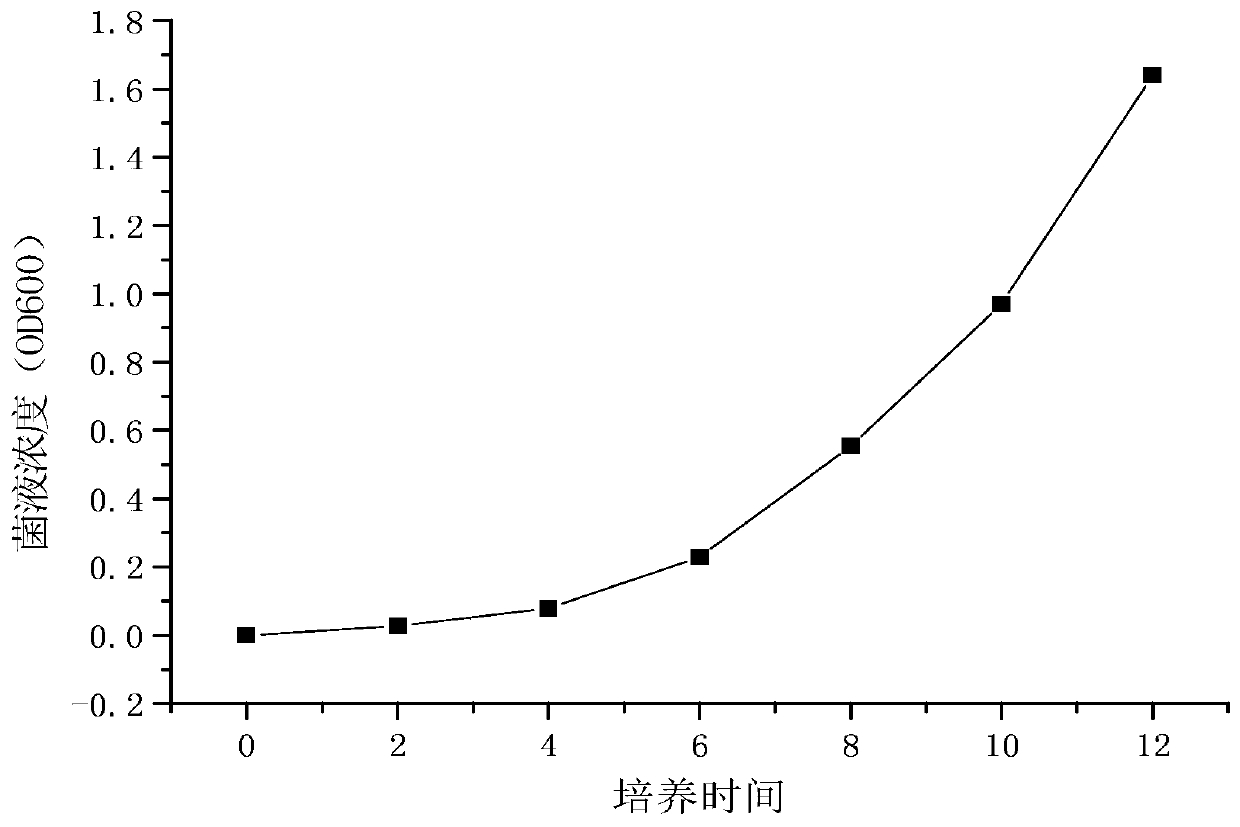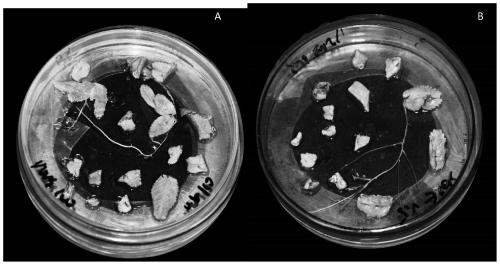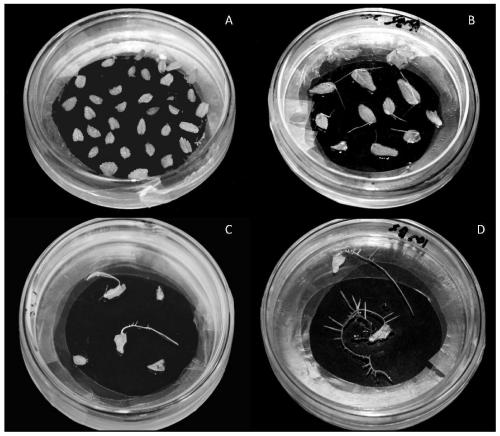Method for producing rose hairy roots through induction of agrobacterium rhizogenes
A technology of Agrobacterium rhizogenes and hairy roots, applied in the field of plant biotechnology engineering, can solve the problems of inability to use medicinal ingredients on a large scale, scarcity and extraction of wild rose plants, and achieve good development and application prospects
- Summary
- Abstract
- Description
- Claims
- Application Information
AI Technical Summary
Problems solved by technology
Method used
Image
Examples
Embodiment 1
[0026] 1. Preservation and activation of Agrobacterium rhizogenes (strain ATCC15834)
[0027] Long-term storage: use 20% (volume concentration) glycerin for storage, that is, add glycerin and bacterial liquid at a volume ratio of 1:4, mix well, and store in a -80°C refrigerator. This method can preserve bacteria for 3 to 5 years.
[0028] Activation of long-term preserved strains: In the ultra-clean workbench, pick a well-growing single colony from the glycerin-preserved strains, streak it on the YEB solid medium, and place it upside down in a constant temperature incubator at 28°C for about 36 hours, until more colonies with a diameter of about 1cm grow, pick a single colony in 3mL YEB liquid medium, culture for 12~14h, draw 30μL of activated bacteria liquid and connect it to 30mL YEB liquid medium, 200rpm Shake culture for 12-14 hours, repeat the above steps for subculture 3-4 times, and store the activated bacterial liquid in a refrigerator at 4°C. The culture conditions a...
PUM
 Login to View More
Login to View More Abstract
Description
Claims
Application Information
 Login to View More
Login to View More - R&D
- Intellectual Property
- Life Sciences
- Materials
- Tech Scout
- Unparalleled Data Quality
- Higher Quality Content
- 60% Fewer Hallucinations
Browse by: Latest US Patents, China's latest patents, Technical Efficacy Thesaurus, Application Domain, Technology Topic, Popular Technical Reports.
© 2025 PatSnap. All rights reserved.Legal|Privacy policy|Modern Slavery Act Transparency Statement|Sitemap|About US| Contact US: help@patsnap.com



